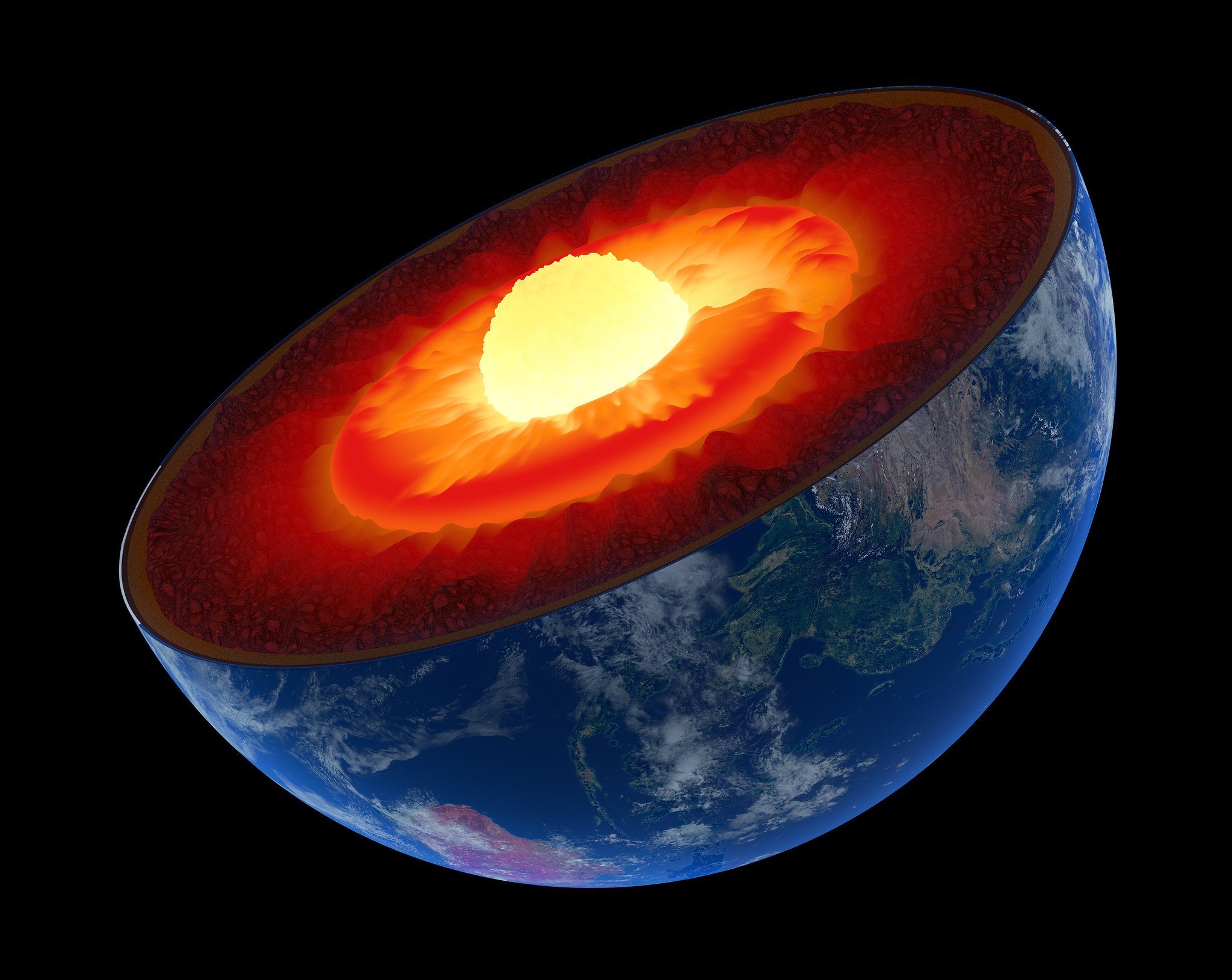 Secrets of Earth’s 400-Mile Hot Core Revealed. Credit: Argonne National Laboratory CC BY 2.0
Secrets of Earth’s 400-Mile Hot Core Revealed. Credit: Argonne National Laboratory CC BY 2.0New research published in the journal Nature Communications has added weight to the theory that our planet’s metallic core contains a distinct ball of iron at its center.
Scientists have long been curious about what lies at the very center of the Earth, which is believed to be composed of a solid metal core surrounded by a molten-liquid outer core, the mantle, and the outermost crust.
The latest study suggests that the Earth’s metal core also has a hidden layer, referred to as the “innermost inner core.” The findings provide valuable insights into the structure and composition of our planet’s interior.
Findings of the New Research
The discovery suggests that the Earth actually has five major layers instead of the previously believed four, offering new insights to help solve some of the oldest mysteries about our planet.
Geoscientists first proposed the existence of an additional layer within the Earth’s core over 20 years ago, and now, using new data sets collected by measuring seismic waves from earthquakes, researchers have finally detected this innermost core.
The study’s co-author, Dr. Thanh-Son Phạm, explained that the observations were made possible by seismic waves originating from powerful earthquakes, which traveled from one side of the globe to the other – back and forth – and up to five times, like a ricochet. This groundbreaking discovery is expected to pave the way for future research on the Earth’s interior.
Gradual Transition of Core and Shell
Dr. Pham explained that the reason why the innermost inner core had not been previously observed in detail is due to its composition being similar to what lies above it.
The research indicates that the newly found core is likely to be a 400-mile-wide ball of metal consisting of an iron-nickel alloy with trace quantities of other components, precisely like its outer shell.
The transformation from the innermost solid ball to the outer shell of the inner core likewise looks to be gradational rather than abrupt, which explains why it can’t be noticed by seismic waves reflecting directly off it.
Different Anisotropic Behavior of the Core
The researchers discovered that the innermost inner core had a particular anisotropy, which indicates that it takes on various properties depending on the angle from which it is examined.
Pham used the example of a piece of wood as an example of an item that is anisotropic. It is possible to split a piece of firewood considerably more easily if you strike it in the direction of the wood’s grain rather than against it.
Earth's Deep Secret Unveiled:
Scientists Discover True Innermost Core after Two Decades of Exploration #tweet #space #astronomy #science #astronomia #astronomer pic.twitter.com/izhlVb5DxD
— Earth Gen (@Earth__Gen) February 22, 2023
He pointed out that the new finding “gives us a glimpse of what might have happened with other planets,” such as Mars, whose magnetic field ceased to exist in the past.
The study represents a significant step towards solving some of the most long-standing enigmas about our planet and the processes that led to its formation.

 1 year ago
66
1 year ago
66











 English (US)
English (US)